Real Estate Lending-When do you need It?
Real Estate Lending, when do you need it?
When it comes to lending and borrowing, there seems to be a library of information and facts one needs to understand before even beginning the process. Broken down, however, this information is easily understood and categorized for clarity’s sake. In mortgages, there are basically two major choices, the Fixed Rate Mortgage and the Adjustable Rate Mortgage (ARM). A fixed rate is an interest rate that remains fixed for the life of the loan, whether it is 15, 20, or 30 years. Adjustable rate refers to a loan that usually features an initial low interest rate (usually for the first year) and often are adjusted on a regular basis after that first year depending on the market rates. Some of these ARMs will have a cap from period to period and by law all of them must have a ceiling on rate increases. This limits the level of risk a borrower is assuming when acquiring this kind of loan. A borrower who intends to live in the property long term and favors peace of mind will likely choose the fixed rate, while another borrower who doesn’t mind a little risk and may sell within a few years might go with the ARM.
As far as loan amounts are concerned, there are two types: conventional and jumbo, depending on the amount borrowed (this amount is reviewed annually). There are also several other types of ways to finance a loan. A Balloon Mortgage is a loan that usually offers very low rates for 5, 7, or 10 years, after which the final payment is due or refinancing is set up. A Blanket Loan is a loan where more than one property is offered for collateral. An Interest-Only Loan is an option that allows the buyer to pay only the interest in the monthly payments for a term (5-7 years typically), and then the options roll in: refinance, pay the balance, or begin paying on the principal. A Hard Money Loan is a type of non-bankable loan that is approved based upon the value of assets, usually equity and other assets (and have a generally higher interest rate). A Package Loan involves securing the cost of both real and personal property. For example, the cost of the new home and all major appliances. This is a popular method of borrowing as it saves time and energy for the buyer who has all of this to do regardless.
Other kinds of loans include the Reverse Mortgage and the Wraparound Mortgage. The reverse mortgage is designed so that the borrower can receive money from the lender in installments, usually monthly with the property being collateral. The borrower will pay all property taxes, insurance and maintenance costs, while not having to pay back the cash advances until the end of the loan. The wraparound mortgage, also called the all-inclusive trust deed, gives the buyer the option of purchasing property without qualifying for a loan or paying closing costs. In this loan, a second mortgage is added to the first, basically meaning that the new mortgage includes the unpaid balance of the original mortgage. Of course, no matter what type of mortgage or loan is secured, other costs and fees are usually applicable, such as closing costs, entry fees, exit fees and administration fees. All properties require mortgage insurance and it is always in the best interest if the potential buyer to pursue multiple competitive quotes before deciding on a lender and type of loan.



